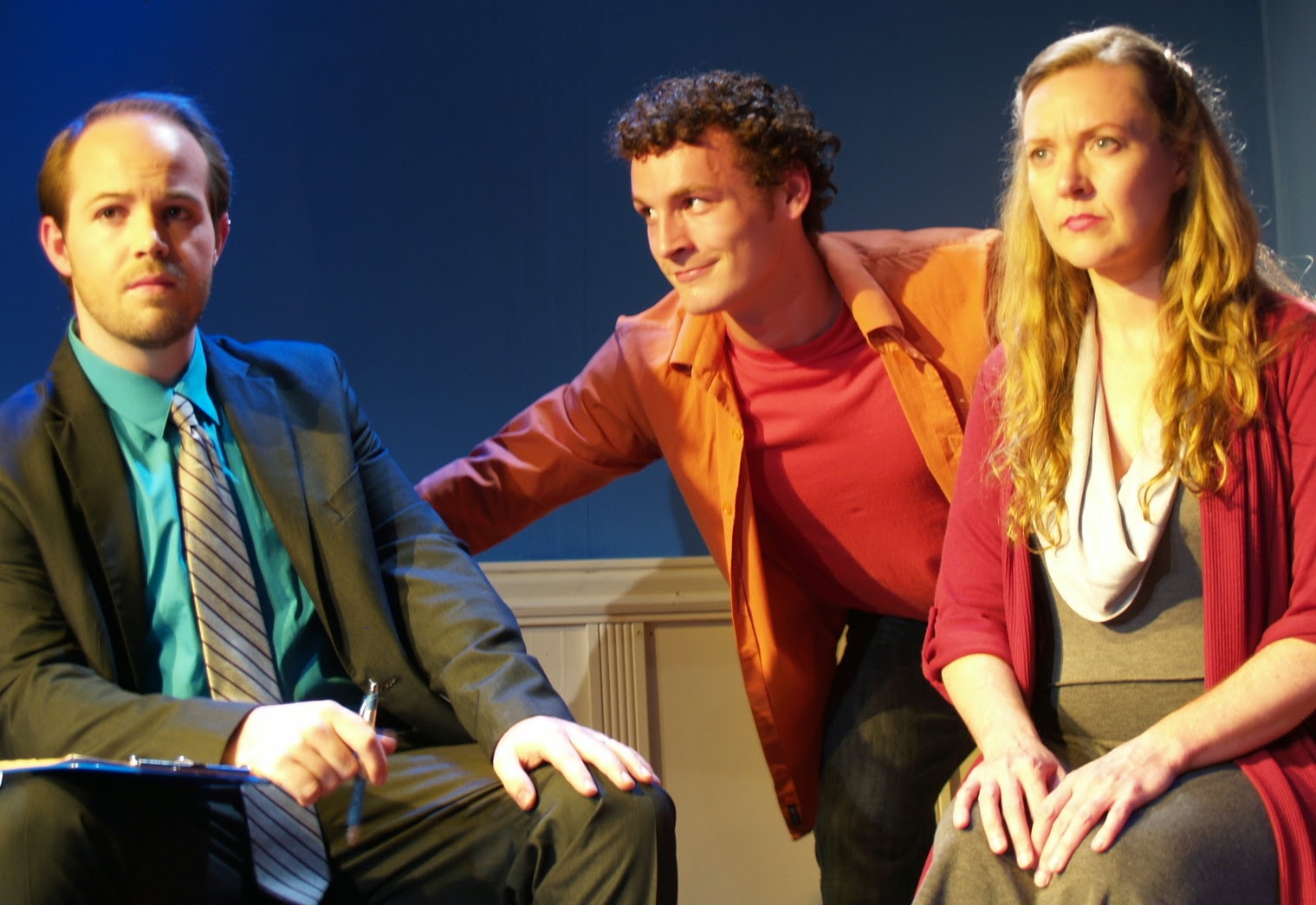I got in enormous trouble with some readers for "giving away" a plot point--that one of the characters was real only in another's imagination. Apparently this was less clear to others than to me very early in the play. (Someone compared it to giving away the "I see dead people" secret in The Sixth Sense movie.)
First of all, I genuinely thought this device was obvious very early, and in this the Wikipedia synopsis of the play agrees with me. But it did bring up the new morality of "spoilers." It's an interesting problem for dealing with a play that is (a) five or so years old but (b) hasn't been mounted before on the North Coast. However, it became impossible to talk about the performance of the actor in question without referring to it. But if I had it to do over again, I guess I'd find a way around it. I suppose this reaction did tell me that at least some people were reading the review before they saw the show.
In the musical Next to Normal, now onstage at North Coast Repertory Theatre in Eureka, Diana is a wife and mother who is being treated for mental illness. The story follows her treatment and how it affects her husband Dan and her teenage daughter Natalie, and Natalie’s relationship with her boyfriend Henry. Then there’s Gabe, the son she sees as a teenager but who in fact died as an infant.
So you should know going in that this is not exactly Anything Goes.
Next to Normal (music by Tom Kitt, book and lyrics by Brian Yorkey) was probably the most celebrated new musical in New York since Rent. It began in 2002 with workshops and eventually opened on Broadway in 2009, where it ran for almost two years. It won multiple Tonys and the Pulitzer Prize, a rare honor for a musical.
Though the play is billed as a rock musical, in this production especially it’s more of a pop music opera. The script is mostly sung, with the arias and various vocal combinations of an opera. With a small instrumental ensemble backstage, no body microphones for the singers and low-keyed lighting, this NCRT production takes a subdued approach. Without the raucous qualities of rock, there’s a contemporary pop feel, with catchy melodies and incisive lyrics (plus some bathetic ones.)
So the emphasis falls on the singers, who were remarkably accomplished already on opening night. Their voices soared and blended with apparently effortless dexterity. Music director Dianne Zuleger prepared them well, especially since director Tom Phillips set a brisk pace for the action.
Andrea Zvaleko plays Diana with a strong voice and understated passion. Her mercurial moments meet the solid guardedness of Kevin Sharkey’s Dan, until his feelings quietly erupt.
Brandy Rose is the teenage daughter Natalie, who moves swiftly through adolescent responses, at times mirroring what her mother is going through.
Gino Bloomberg plays a dangerously charismatic Gabe, an illusion who insists he is real, and in terms of being a crucial character to his mother and in this story, he is.
In smaller but still important and well sung roles, Luke Sikora is the sweet stoner who becomes a rock of stability for Natalie, and Alex Moore plays the two doctors who apply modern medicine and psychotherapy with mixed results.
As a story, this play is mindful of predecessors both in depicting a family under stress (suggesting that society is itself insane), and in addressing mental illness. Nailing Diana’s illness to a specific precipitating event is dramatically efficient though it may also be oversimplifying. It’s a delicate dance between touching the typical bases and portraying an individual family, but that seems inherent in the subject.
The play ends with decisions but refuses easy resolution. Even in terms of what came before, not everyone will find the ending satisfying, though it does include affirmation (the last song promises “there will be light”) with the determination to live “close enough to normal to get by.”
The subject of mental illnesses and treatment in the family are probably resonant for many members of an average audience. Those who take the emotional journey of this play will probably have a lot to talk about.
The excellent backing instrumentalists are Jonathan Webster (piano), Charlie Sleep (guitar), Bobby Amirkhan (electric bass) and Melissa Gussin (percussion.) Kyle Handziak designed the effective set, Calder Johnson the lighting, Jenneveve Hood the costumes. Next to Normal plays at North Coast Rep Fridays and Saturdays through June 22.
Brad Hills, the new executive director of Ferndale Repertory Theatre, has announced that its new season will have a common theme: “Family, Friends, Ferndale!” First there’s a trio of classics with a small town setting: Thornton Wilder’s Our Town in October, Meredith Wilson’s The Music Man in November, and another Kaufman and Hart comedy, The Man Who Came to Dinner in January. Then the musical Monty Python’s Spamalot opens in March, and the comedy The Dixie Swim Club in June.
With these selections, Hills is reportedly responding to dissatisfaction among longtime Ferndale Rep financial supporters. These “MainStage” shows may be augmented by smaller-scaled productions, though how that might work has not yet been announced.

No comments:
Post a Comment